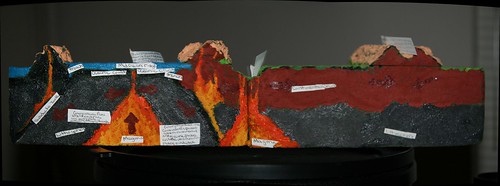Gobert, Snyder and Houghton (2002) studied the effects of “What`s on Your Plate?“ in WISE (Web-Based Inquiry Science Education). WISE is an inquiry-based framework that allows users to create and edit science lessons for technology-enhanced learning experiences (TELEs). It encourages content knowledge as well as process and inquiry skills. Information and communication technology outcomes are to be embedded throughout curricula. WISE use accomplishes this as well while covers many specific science learning outcomes. According to Linn (1999), the WISE creator at UC-Berkeley, WISE is based on four principles:
1. Make science accessible for all students
2. Make thinking visibale
3. Provide social support so that students learn from each other
4. Promote autonomy and lifelong learning
WISE was chosen as a platform as it enables students to build models as well as its attempt to make learning visible (so it can be measured). Students from the east and west coast were asked to draw and explain a model of plate tectonics on their computers in the WISE program and then share their work with a partner from the opposite coast. Upon completion of the assignment they were to reflect on the use of models and learning. They were then given the opportunity to revise their models and share again, explaining their modifications. In general the exercise improved student knowledge on plate tectonics as well as model construction. I don`t know that the authors could conclude that the use of this one model shows a “deep understanding of the nature of models“ but I believe their knowledge of them improved. To show a deep understanding there would have to be more evidence than an edited drawing. There are many possible projects that could come out of an assignment like this and poor quality web-based drawings are only one option. I would lean towards using physical models instead of web (Paint) drawings to show the students understanding of plate tectonics as movement is involved as well as multiple effects.
I agree with Diana who wrote,”many of us connect with WISE as a teaching tool because it is continually evolving.” Teachers do not want to recreate the wheel on every assignment-there just is not enough time to do so. If we can have a collaborative evolution with best pedagogy in mind the WISE lessons will be current for years to come. I like how Berkeley has upgraded to newer versions of the program, as occasionally the supporting structure needs replacement, not just a fancy paint job. New buttons and affordances were evident in the newer versions mentioned. I can see WISE being used as a social platform for students to share their creations as well as discuss the concepts. I believe if we can use existing technology to create thoughtful discussion our students would benefit greatly from our efforts. The struggle is between having the time to properly construct knowledge, through real experiences, versus passive learning of facts and concepts by direct instruction or reading. Generally, there never seems to be enough time.
References:
Gobert, J., Snyder, J., & Houghton, C. (2002). The influence of students’ understanding of models on model-based reasoning. Paper presented at the Annual Meeting of the American Educational Research Association (AERA), New Orleans, Louisiana.
Linn, M. C. (1999). Designing the knowledge integration environment: The partnership inquiry process. Created for International Journal of Science Education.
Linn, M.C.,Clark, D., Slotta, J.D. (2003). Wise design for knowledge integration. Science Education, 87(4), 517-538.


